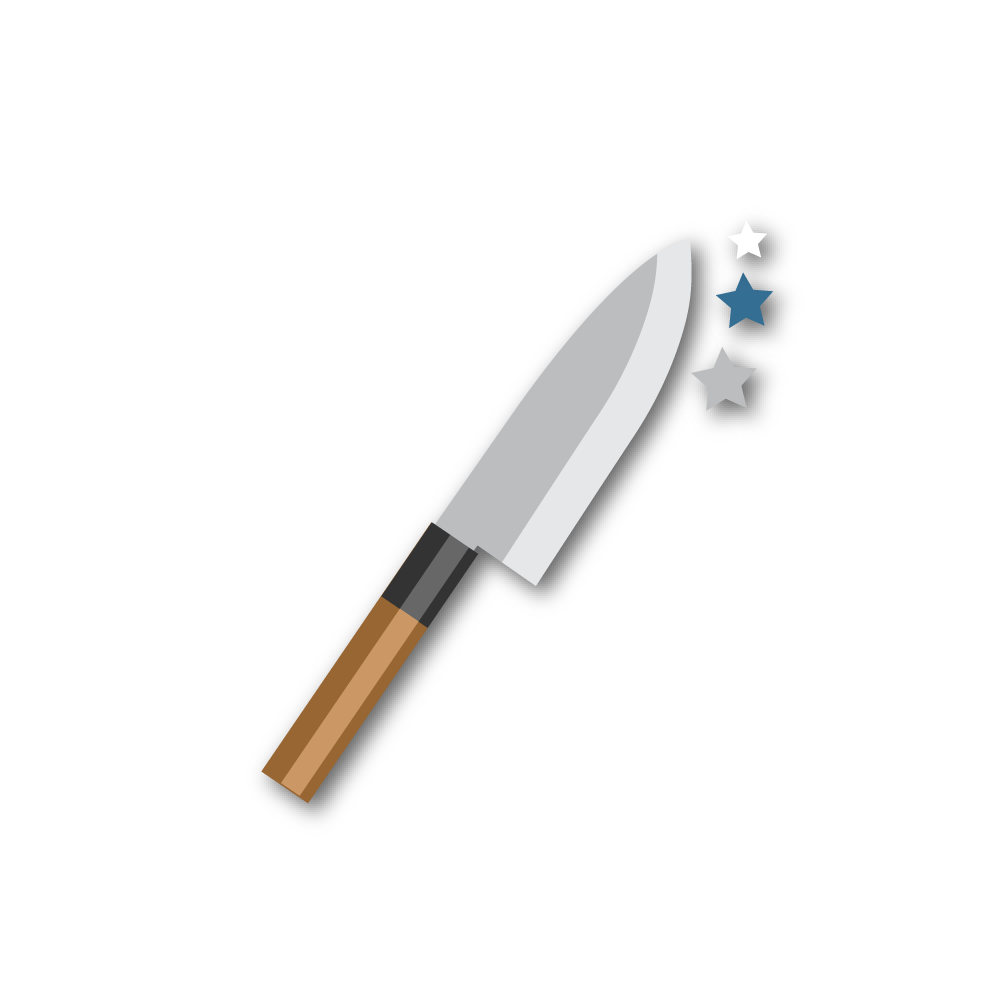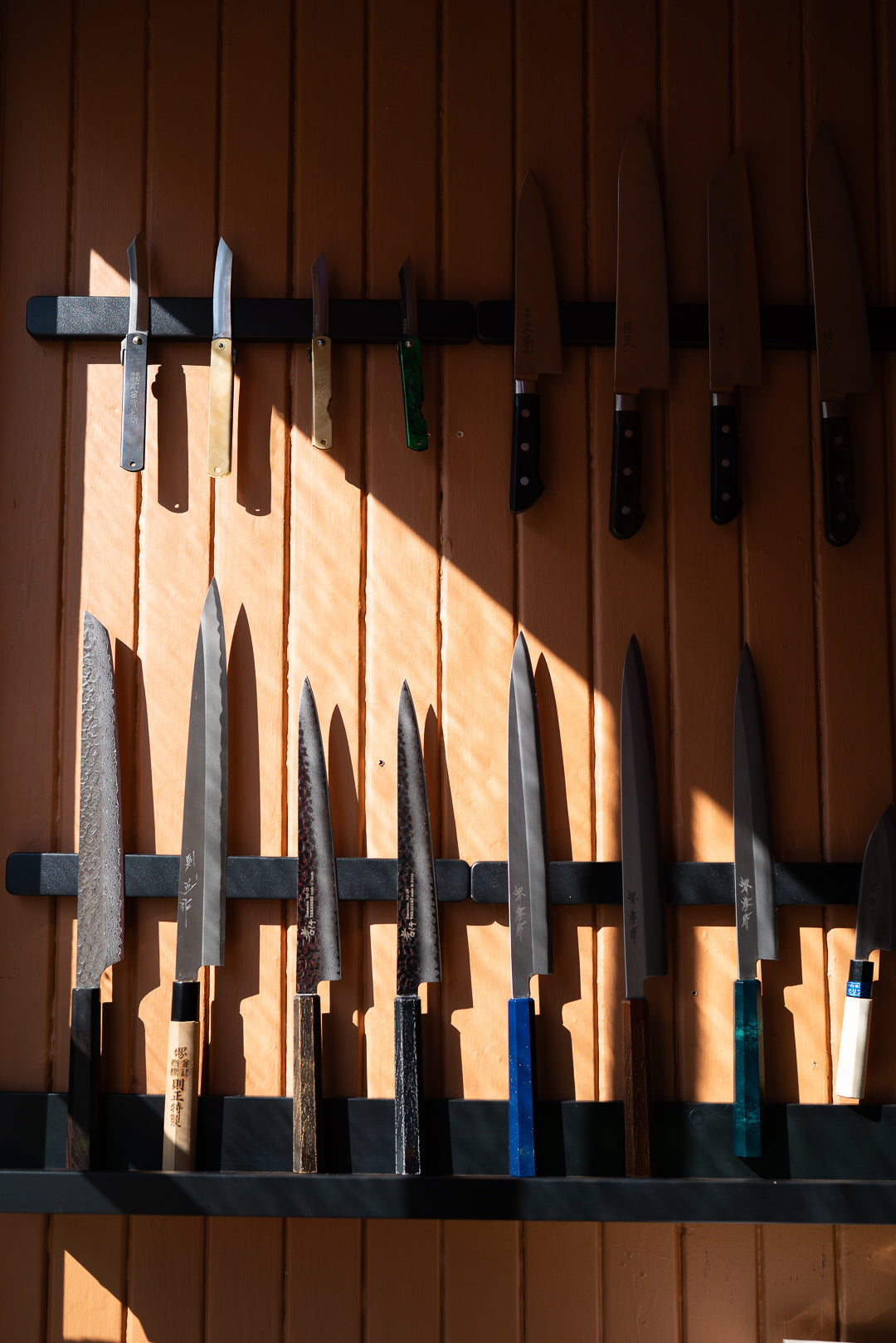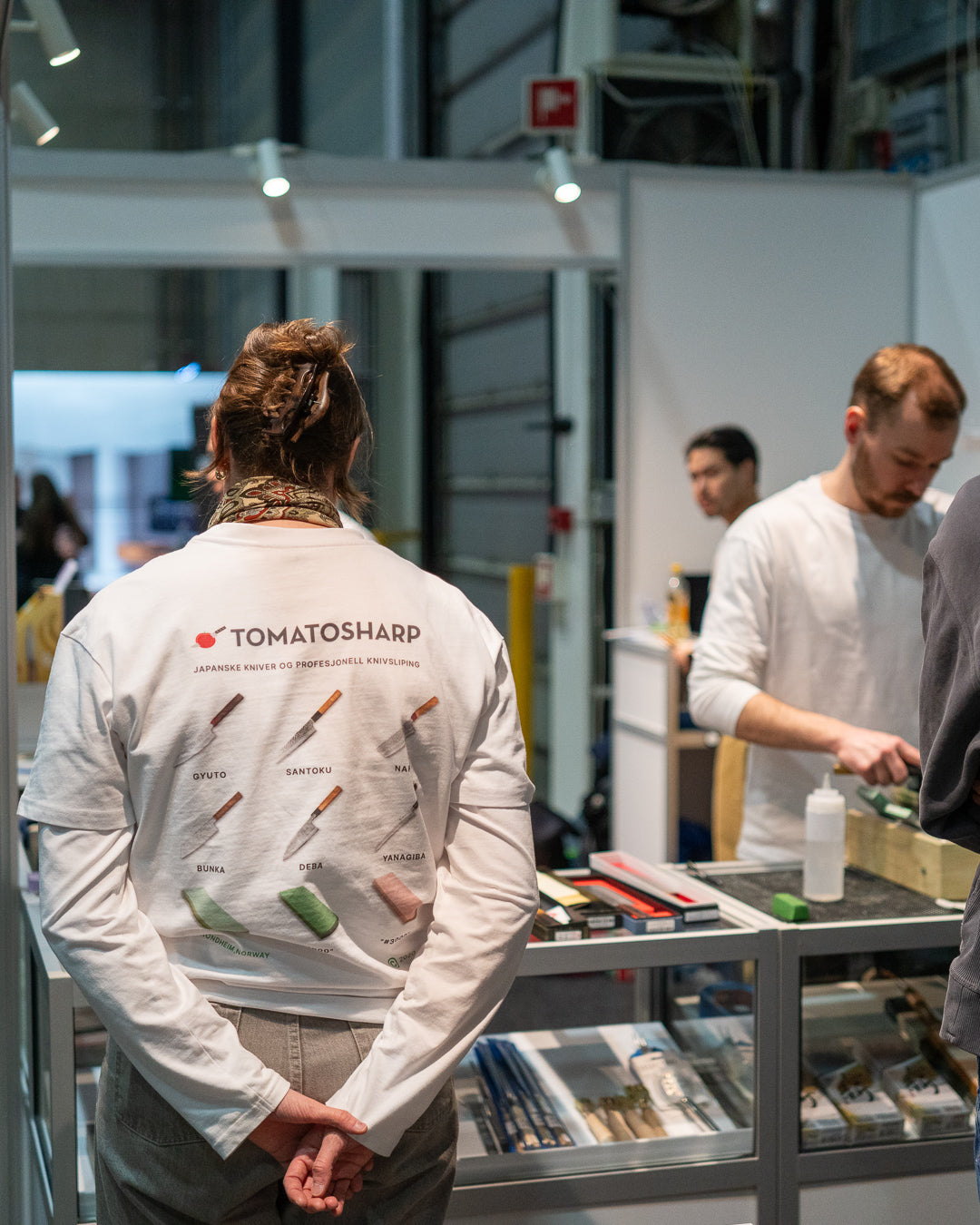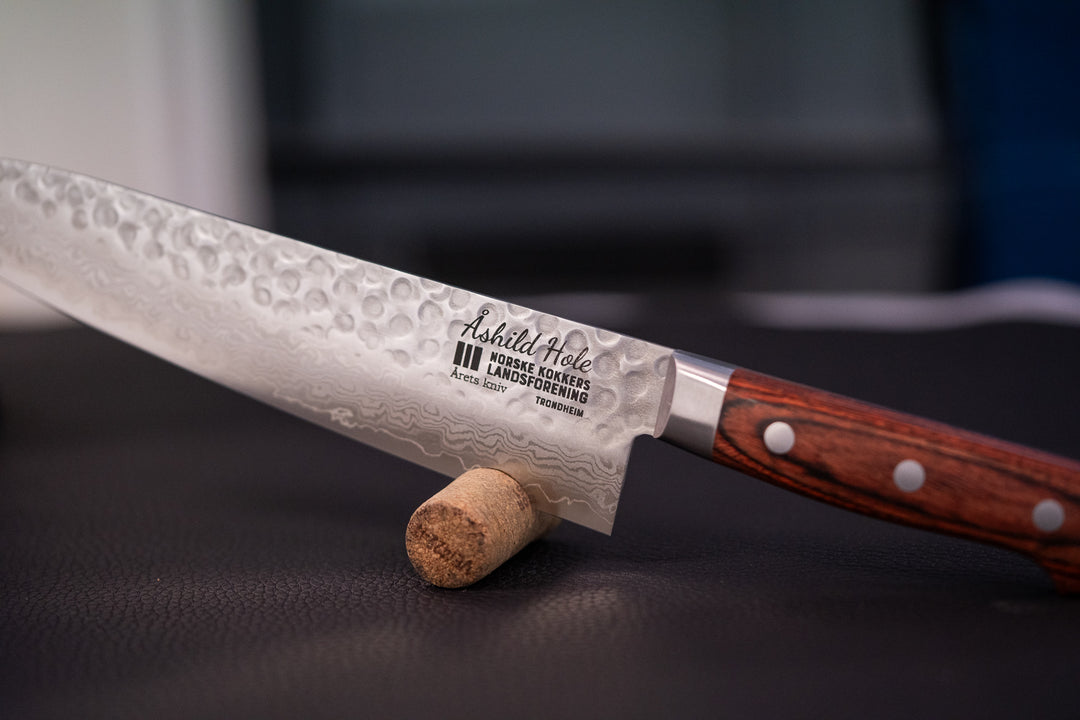OUL Tsuchime Nakiri 165mm
- In stock, ready to ship
- Backordered, shipping soon
Shop nå. Betal med Klarna.

- Levering 1-3 virkedager
- Fri frakt over 1000kr
- 30 dagers åpent kjøp
| Knivtype | Nakiri / Vegetable knife |
| Bladlengde | 165 mm |
| Høyre-/venstrehendt | For both |
| Slipefase | 50/50 |
| Håndtak | Magnolia and buffalo horn |
| Hardhet | 62-63 HRC |
| Ståltype | Karbonstål |
| Stål | White #2 (Shirogami #2) |
The OUL Tsuchime Nakiri 165 mm is a beautiful vegetable knife with a hammered finish and a traditional magnolia handle with buffalo horn. It will glide through any root vegetable you may have with its razor-thin blade.
NOTE : The Nakiri should not be confused with a meat cleaver, and should only be used carefully on boneless foods. It has a very thin blade that should glide easily through root vegetables and other delicate foods.
Tsuchime is a Japanese word meaning "hammered". The Tsuchime technique is used to hammer or strike the surface of the metal to create a unique texture and pattern. This can be both decorative and functional. The hammered surface makes it visually interesting and can help increase the strength and durability of the knife.
Steel
Shirogami #2, also known as White steel #2, is a type of high carbon steel with a lower carbon content than Shirogami #1, making it slightly softer. Overall, it is a high quality carbon steel that offers exceptional sharpness. It is a popular choice among those who appreciate hand-forged knives.
En nakiri er en grønnsakskniv med et kort, rett og bredt blad uten tupp, som gjør den ideell for hakking og kutting av grønnsaker. Nakiri-kniven er spesielt designet for å oppnå fine og jevne kutt, som er viktig for oppgaver som hakking, skiving og julienning av grønnsaker. Med sin spesialiserte design og egenskaper er en nakiri en perfekt kniv til all grønnsaks-prepping på kjøkkenet.
NB: Nakiri er ikke en kjøttøks og skal ikke brukes til å hakke gjennom bein eller frossen mat.
Ligner på White #1, men med litt lavere karboninnhold, noe som gjør det mer tilgivende under bruk. Lett å slipe og opprettholder en skarp egg godt.
Rengjør og tørk umiddelbart etter bruk; unngå langvarig eksponering for fuktighet. Over tid vil stålet utvikle en beskyttende patina som forbedrer rustmotstanden og gir karakter til bladet.
Bruk
Japanske kniver er vanligvis tynnere og mer delikate enn vestlige kniver, så de er ikke egnet for å kutte gjennom bein, frosne matvarer eller harde gjenstander. Bruk et mykere skjærebrett laget av tre, plast eller gummi og skjær med en rullende bevegelse i stedet for å presse ned med kraft.
Vask og oppbevaring
Vask kniven for hånd med mild såpe og varmt vann umiddelbart etter bruk. Tørk kniven med en myk klut eller et kjøkkenhåndkle for å forhindre rust. Oppbevar kniven på en sikker og tørr plass når den ikke er i bruk. Bruk gjerne en knivblokk, magnetisk knivholder eller knivslirer for å forhindre skader på eggen. Les mer
Vedlikehold
Vi anbefaler å bruke en keramisk brynestav i kombinasjon med en lærstropp for å vedlikeholde / skjerpe eggen. Dette gjør at kniven holder seg skarp mye lenger før den må slipes på stein. Ved sliping anbefaler vi våtslipesteiner for å få best resultat, samtidig som at man fjerner minimalt med materiale.

























